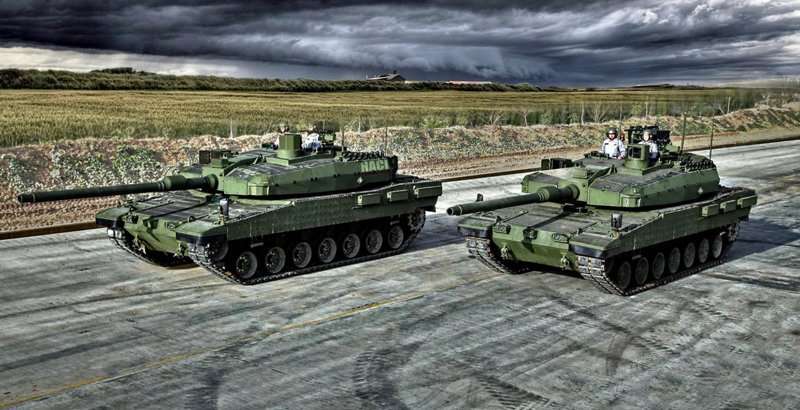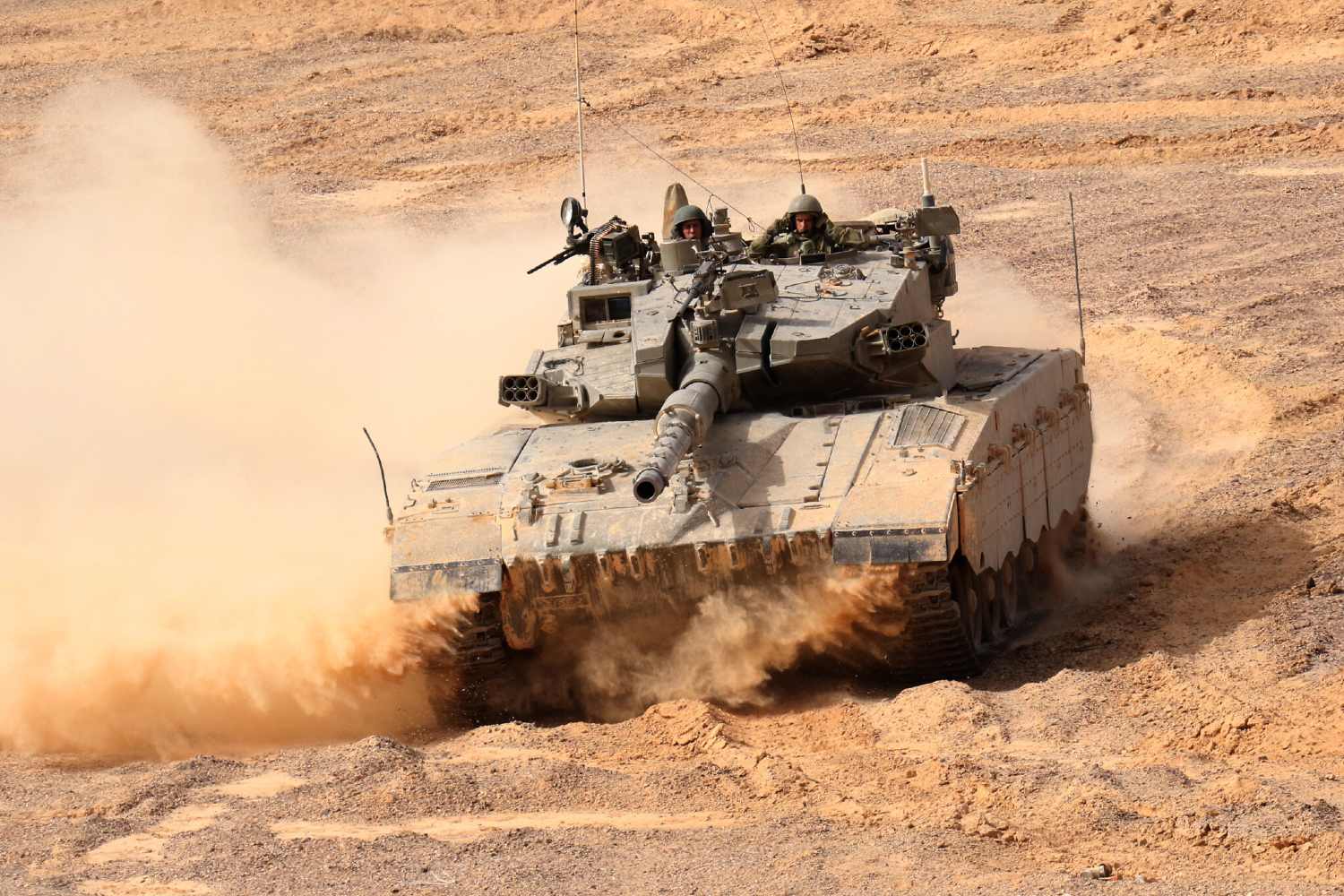With Israel making inroads in Europe with its cutting-edge weapon systems, there are reports that the country is in talks with at least two potential customers to sell its used Merkava tanks, with at least one being a European country.
The chief of the ministry’s International Defense Cooperation Directorate, or SIBAT, Yair Kulas, stated that his organization was promoting additional sales of excess Israel Defense Forces (IDF) weapons in an interview with the Calcalist financial paper.
“There is a potential of several hundred million shekels there. The world is chasing systems, and production processes require time, and not everyone has the time to wait,” Kulas said.
Kulas pointed out that many European nations were attempting to quickly restock after giving Ukraine armaments worth billions of dollars that assisted it in repelling Russia’s invasion.
“There are two potential countries with which we are holding advanced negotiations [on a sale of the Mervaka tanks],” he said. “I am barred from naming them, but one is on the European continent.”

Although the parties now engaged in discussions with the Israeli MoD have not been named, there have been rumors that Colombia and Turkey were interested in purchasing samples in the past. So, without clear information, some sections speculate that Turkey could be the European customer.
However, military watchers believe it is less likely now that Turkey would be willing to purchase a used Israeli tank. As earlier reported by EurAsian Times, Turkey has been steadily advancing work on its domestically-built Altay tank, for which the engines have also been secured from South Korea. In addition, it is also exploring upgrades to its M60.

Currently, the names of those countries are unknown. However, since the cat has been let off the bag, speculations are going around that the second-hand Israeli Merkavas may eventually be headed toward Ukraine.
Israel has refused to transfer any military aid to Ukraine, considering its working relationship with Russia in a battleground of more strategic significance than Ukraine: Syria.
The speculations are also fueled by Ukrainian pleas for additional tanks from NATO countries. In a recent media interaction, the deputy foreign minister of Ukraine, Andriy Melnyk, said Berlin should increase its offer to Kyiv of Leopard 2 aircraft from 18 to 54.
“The Ukrainian army most urgently needs many more Western battle tanks, infantry fighting vehicles, and other armored vehicles,” Melnyk said.
NATO allies Denmark and The Netherlands have already stepped up and are financing 14 Leopard-2 battle tanks worth a three-digit million euro sum from Western partners. The Rheinmetall Group will supply and refurbish the vehicles; the contract work has already been completed.

With the collective West rallying behind Ukraine with additional equipment and other support for aiding its counteroffensive against Russia, the news about Israel selling its Merkava tanks to a European country has triggered rumors and hopes that it might be headed to Ukraine.
This is true as there have been several instances where countries unwilling to transfer military aid to Ukraine directly for fear of provoking Russia have sold them to a third NATO country that shipped it to Ukraine. A case in point is the US buying 155mm artillery shells from South Korea to redirect them to Kyiv.
Since the 1980s, the Merkava has served as the IDF’s primary battle tank. The Armored Corps has recently switched out most of its Merkava Mark 3 vehicles for the more contemporary Mark 4.
According to a report in Times of Israel, the Merkava Mark 2 and some Mark 3 tanks, first produced in the 1990s, are the variants expected to be included in the prospective sales.
IDF’s Merkava Tank
The Merkava, which translates to “chariot” in English, was developed in response to the Six-Day War in 1967 and the need for a more modern and well-protected main battle tank than the more traditional Western models in Israeli service.
Early in the 1970s, work on the new Israeli tank began, building on the knowledge from the Yom Kippur War of 1973.
The resulting main combat tank design is still unmatched by any other main battle tank. The Merkava is unlike most current tanks in that the turret is placed towards the back, and the engine is situated in the front of the hull, better hiding it from enemy fire.
The Merkava initially stood out for its rearward turret, which is more typical of SPGs than MBTs. But because it helps to defend the front of the combat compartment, the engine’s placement at the front was done with careful consideration for the safety of the crew.
Furthermore, this compartment was very spacious, allowing several infantrymen and their gear to board. Another unique feature was the rear two-hatch door, which allowed for quick crew evacuation and APC-style entry, particularly helpful during the fight in Lebanon.
The British Centurion was a major design influence on the drive train, suspension, and tracks.
A 65-ton vehicle’s mobility on soft ground and power-to-weight ratio were both good, thanks to the diesel engine. It was able to meet two of the original requirements—cost-effectiveness and ease of upkeep and repair on the battlefield—by using a variety of other approaches that were taken from already-in-use systems.

The drive train had six road wheels, a front-drive sprocket, a rear idler wheel, and three return rollers. The front surface of the turret, which was enormous but low, thin, and triangular, was completely flat.
The IDF started receiving upgraded Mk 2 models in 1983. These vehicles had upgraded powertrain and armor components, among other changes. The crew could now fire the 60mm mortar from inside the turret even when buttoned up, thanks to a change in the new design.
New thermal optics were installed to additional Mk 2 subvariants to enhance the tank’s night-fighting capabilities and add-on armor packages. With the addition of a composite armor package with modular portions that were simpler to replace when damaged, the Mk 2D version advanced the armor enhancements.
The 1989 release of the Mk 3 model saw a more significant improvement in all-around capability. The bigger 120mm main cannon was the first to be equipped with this model. Additionally, it got a more potent engine, an upgraded drive train, and considerable optics and fire control improvements. The Mk 3 is consequently around five tons heavier than the original model but also faster, with a top road speed of about 37 mph (60 kph).

There were also produced several Mk 3 subvariants with improved sensors and other features.
The most recent Mk 4 expands on the Mk 3’s upgrades. It has an upgraded 120mm gun and a new hull that is necessary to make room for its even more potent powerplant. Additionally, it offers enhanced data-sharing, battle management, and sensor capabilities.
The Trophy Active Protection System (APS), which adds a layer of defense against anti-tank guided missiles and other infantry anti-armor weaponry, was first installed on Mk 4 models by the IDF in 2009. Various Merkava variants have been created and deployed, including the Ofek command vehicle and Namer, a heavily armored personnel carrier without a turret.
- Contact the author at sakshi.tiwari9555(at)gmail.com
- Follow EurAsian Times on Google News




